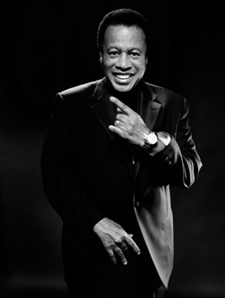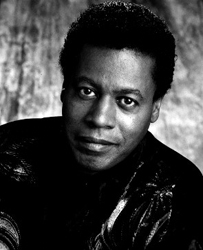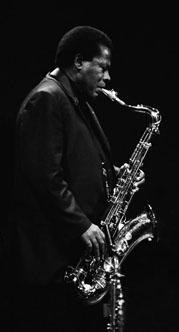Wayne Shorter
 Wayne Shorter was born on Aug. 25, 1933, in Newark, New Jersey. He is simply one of the great legends of jazz. He has been one of the leading tenor and soprano saxophonists for almost the past 40 years. He is one of the finest composers that jazz has ever known. His work as a leader for Blue Note Records, as well as his work with the Miles Davis second classic quintet in the 1960’s, may be one of the finest and most productive ten-year stretches in the history of jazz, or modern music.
Wayne Shorter was born on Aug. 25, 1933, in Newark, New Jersey. He is simply one of the great legends of jazz. He has been one of the leading tenor and soprano saxophonists for almost the past 40 years. He is one of the finest composers that jazz has ever known. His work as a leader for Blue Note Records, as well as his work with the Miles Davis second classic quintet in the 1960’s, may be one of the finest and most productive ten-year stretches in the history of jazz, or modern music.
He attended Music and Arts High School in Newark, and graduated as an art major; his music interests were limited in those days. Near the end of his high school career he picked up a saxophone, and with the encouragement of his father, began to play. Upon graduation from NYU in 1956 he was drafted and served in the U.S. Army until 1958. During his stint in the army he was able to play a three-night gig in Philadelphia with Horace Silver’s Quintet. After his discharge from the army, he was back in New York and played a short time with Maynard Ferguson. It was here that he met pianist Joe Zawinul.
Shorter’s improvising was always notable for its great harmonic and rhythmic sophistication. His early tenor saxophone solos, inspired by Sonny Rollins, featured rare formal unity using thematic improvisation techniques, often with drama and humour (“Afrique,” “High Modes”). Shorter wrote many of his finest songs for the Blakey and Davis groups, including “Lester Left Town,” “Ping Pong,” “Children of the Night,” and “Footprints.” Shorter joined Art Blakey’s Jazz Messengers in 1959 and was with them until 1963. During his stint with the Messengers he was joined by trumpeter Lee Morgan, pianist Bobby Timmons, bassist Jymie Merritt, and Blakey. During this time with the Messengers he also became the “musical director” of the band, as had Horace Silver and Benny Golson before him. It was also during this time that he made his first recordings as a leader on the Chicago-based Vee-Jay label.
The year 1964 was a giant year in Shorter’s career. He made his debut as a leader on Blue Note Records (Night Dreamer), and joined the Miles Davis Quintet in place of the  departed John Coltrane. This had to be a bittersweet experience for Shorter, replacing one of the men whom he cites as a major influence on his playing style. When Shorter joined the Miles Davis Quintet, Davis would later write, ‘when he (Shorter) came into the band it started to grow a lot more, and a whole lot faster, because Wayne is a real composer. He writes scores, write the parts for everybody just as he wants them to sound. He also brought in a kind of curiosity about working with musical rules.
departed John Coltrane. This had to be a bittersweet experience for Shorter, replacing one of the men whom he cites as a major influence on his playing style. When Shorter joined the Miles Davis Quintet, Davis would later write, ‘when he (Shorter) came into the band it started to grow a lot more, and a whole lot faster, because Wayne is a real composer. He writes scores, write the parts for everybody just as he wants them to sound. He also brought in a kind of curiosity about working with musical rules.
After three routine Columbia albums during 1986, and a tour with Santana, he lapsed into silence, finally emerging in 1992 with Wallace Roney and the V.S.O.P. Rhythm Section in the “A Tribute to Miles” band. In 1994, now on Verve, Shorter released “High Life,” a somewhat more engaging collaboration with keyboardist Rachel Z. In concert, he has fielded an erratic series of bands, which could be incoherent one year (1995), and lean and fit the next (1996). He guested on the Rolling Stones’ Bridges to Babylon in 1997 and on Herbie Hancock’s Gershwin’s World in 1998. In 2001, he was back with Herbie for “Future 2 Future” and on Marcus Miller’s “M2.” The year 2002 saw the release of “Footprints Live” under his own name, followed by “Alegria” in 2003. Given his long track record, Shorter’s every record and appearances are still eagerly awaited by fans in the hope that he will thrill them again.

